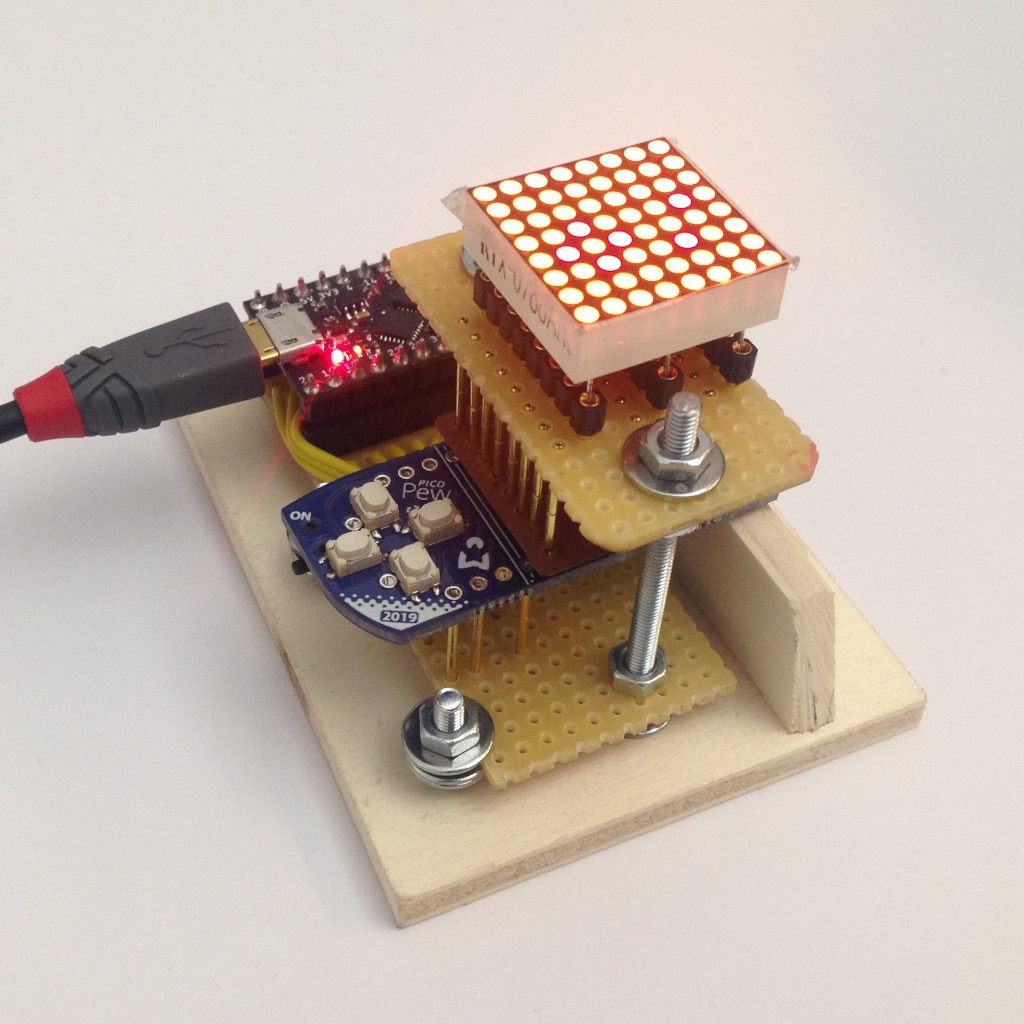
With the pogo pins that have arrived in the meantime, I have built a testing jig that can reliably connect a TinyPICO and an LED matrix to a half-assembled PicoPew. I have also written a testing program that uses the open/short detection feature of the IS31FL3733 LED driver to detect any disconnected or shorted LEDs, then displays some patterns on the matrix that help visually identify if any LEDs are disconnected or any rows or columns are connected together, and finally displays the state of the buttons. It gives feedback through differently colored blinking of the TinyPICO’s DotStar and through output on the serial console, and gracefully restarts the testing sequence when the connection to the PicoPew is broken.
I ran the 10 boards assembled by PCBWay through this and am pleased to report that all of them work flawlessly. That makes me happy, because it means that I can get a good yield without testing at the factory, which would have been a hassle – building a more robust version of the testing jig, shipping it to China, writing instructions for it.
 Christian Walther
Christian Walther
Discussions
Become a Hackaday.io Member
Create an account to leave a comment. Already have an account? Log In.